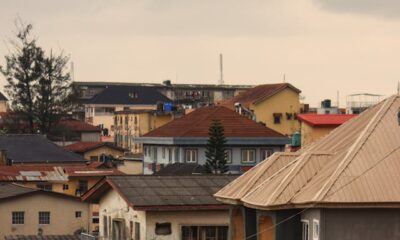Features
Dennis Isong: Understanding Land Sizes and Measurements in Nigeria

Nigeria uses a combination of metric and older colonial systems for land measurement. There are different land measurements, units, and how to calculate land sizes to accurately acquire property. When buying or selling land, it is crucial to have a precise understanding of its size and measurement. Misunderstanding these measurements can result in underpayment, overpayment or legal disputes. Having a clear understanding of land sizes is essential for effective planning, including budgeting for construction, accounting for setbacks and creating space for landscaping. For developers, comprehending these measurements is crucial for complying with zoning regulations and for avoiding land disputes.
Common Units of Land Measurement in Nigeria
There are various units of measurement used when describing land. These include the square meter, the hectare and the plot.
The square meter is one of the most commonly used units for land measurement in Nigeria. It is part of the metric system and is used to express smaller plots of land, especially in urban developments. An area is equivalent to a square that is one meter on each side. While this might be a small unit in comparison to the land sizes most Nigerians purchase, it is the foundation for calculating larger land areas. For example, if you’re purchasing a plot of land that is 100 square meters, which is an area that is 10 meters by 10 meters.
The hectare is a larger unit of measurement and is used when describing larger areas of land. One hectare is equivalent to 10,000 square meters. The hectare is especially useful in agricultural land purchases, estate development, and larger real estate projects. Farmland and estates are often measured in hectares. For instance, if a large estate spans 5 hectares, it covers 50,000 square meters. This is about the size of a typical estate with multiple houses, roads, and communal spaces.
An acre is another common unit used to measure land in Nigeria. Though it is not part of the metric system, it remains popular because of its historical use. One acre is equivalent to 4,047 square meters or about 0.4047 hectares. Acres are often used in semi-urban and rural areas, where larger land sizes are typical. It is common to hear real estate agents or landowners describing property in terms of acres, especially when dealing with agricultural land or estates.
The plot is probably the most familiar land measurement term in Nigeria. It refers to the standard unit of land that can accommodate a residential building. However, the size of a plot varies depending on location, especially between urban and rural areas. In Lagos, for example, a standard plot size is about 600 square meters. However, this can vary, with some plots being as small as 450 square meters or as large as 1,000 square meters. It is important to note that the size of a plot may also vary depending on the real estate developer or the layout plan of a specific estate.
Conversion Between Land Measurements
Understanding the relationships between different land measurement units is crucial for making accurate calculations. Here’s a quick reference for some common conversions:
1 hectare = 10,000 square meters
1 acre = 4,047 square meters
1 acre = 0.4047 hectares
1 plot = 600 square meters (standard size, but can vary)
These conversions are useful when trying to determine the equivalent size of land, especially when comparing prices or potential investments. For instance, if you are told that a plot of land is available for sale and it is 3,000 square meters, you know that it is approximately 5 plots.
Land Survey and Demarcation in Nigeria
Before purchasing any land in Nigeria, it is essential to ensure that it has been surveyed and properly demarcated. A land survey helps establish a property’s boundaries and provides the legal description of the land. A certified land surveyor carries out this process – a survey plan – which details the exact measurements of the land.
The importance of a land survey is to prevent land disputes, especially in densely populated areas where land is scarce. The survey plan will also include details about adjacent properties, access roads, and other landmarks that can help identify the exact location of the land. When purchasing land, always insist on seeing the survey plan and ensure it matches the physical dimensions of the property.
Factors That Affect Land Measurement and Size Perception
Various factors can influence the perception and calculation of land sizes. One common issue is the variation in plot sizes across different regions. In rural areas, plots tend to be larger due to the availability of more land, while urban areas have smaller plots because of high demand and limited space.
In addition, some landowners may divide plots into smaller sizes to make them more affordable for buyers. For example, a landowner may split a 600-square-meter plot into two 300-square-meter plots to allow for the sale of smaller, more affordable pieces of land. Another factor is land topography. In areas with uneven terrain, the actual usable land area may be smaller than the measured size. For instance, if a plot of land is on a slope, the usable flat area may be much smaller than a plot of the same size on level ground.
Legal Implications of Land Size in Nigeria
In Nigeria, land is governed by various laws and regulations, including the Land Use Act of 1978. This law vests all land in the hands of the state, and individuals only hold land through a right of occupancy. It is essential to ensure that the land size in your documents matches the actual size of the land, as discrepancies can lead to legal issues. When purchasing land, ensure that the size mentioned in the land title, survey plan, and deed of assignment all align. Any discrepancies could lead to ownership disputes, encroachments, or complications during the resale of the property. Being well-informed about land sizes not only protects you legally but also ensures you get the best value for your investment.
***
Feature Image by Tubarones Photography for Pexels






















